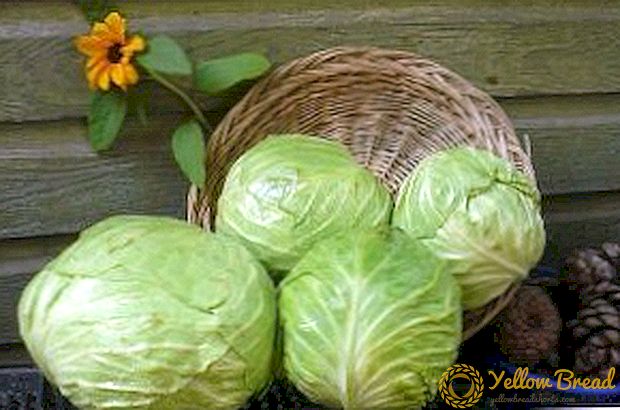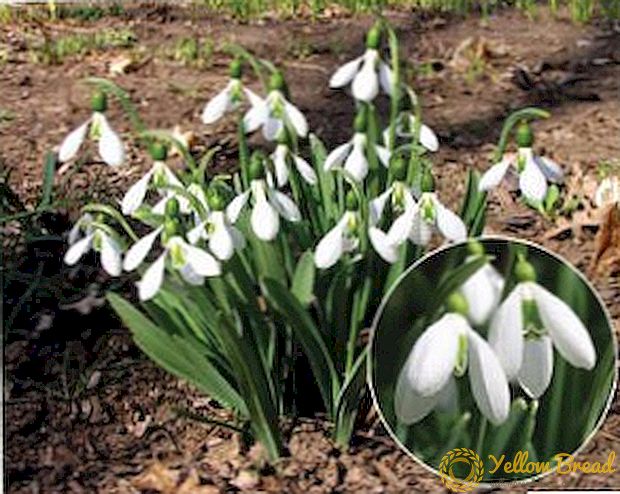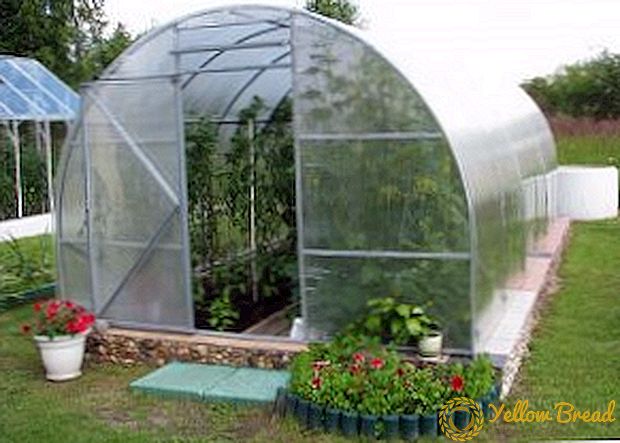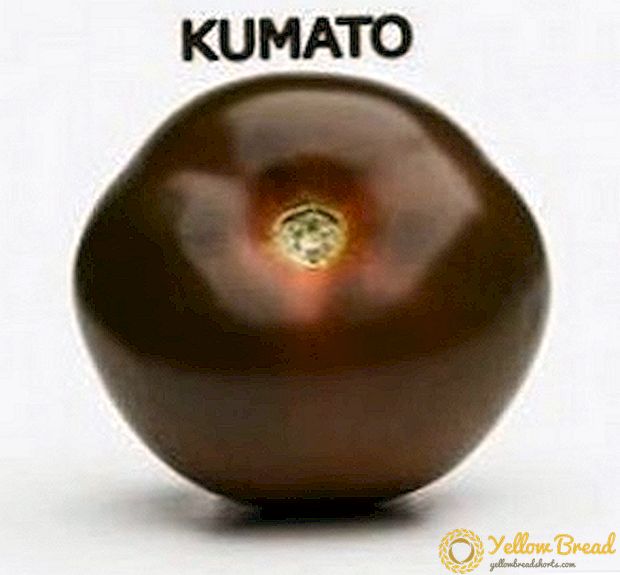 The natural habitat of blackberries, bushes with curled thorns and delicious black berries, is wide - this is North America and Eurasia. The most active breeding work on the cultivation of garden varieties of blackberry has been conducted since the nineteenth century in the United States (more than 300 varieties have been bred). The popularity of this berry in our country is growing - an increasing number of gardeners are beginning to appreciate the blackberry for her:
The natural habitat of blackberries, bushes with curled thorns and delicious black berries, is wide - this is North America and Eurasia. The most active breeding work on the cultivation of garden varieties of blackberry has been conducted since the nineteenth century in the United States (more than 300 varieties have been bred). The popularity of this berry in our country is growing - an increasing number of gardeners are beginning to appreciate the blackberry for her:
- sweet and pleasant taste;
- therapeutic and nutritional properties;
- high yield;
- unpretentiousness and ease of care;
- weak disease susceptibility.
- Blackberry Noncommunicable Diseases: Signs and Treatment
- Bacterial diseases, measures to combat them
- Crayfish
- Viral diseases: signs and treatment
- Curly
- Mosaic
- Yellow mesh
- Blackberry fungal diseases, how to deal with them
- Anthracnose
- White spot (septoriosis)
- Purple Spot (Didimella)
- Gray Rot (Botrytis)
- Rust
- Phyllosticosis
Blackberry Noncommunicable Diseases: Signs and Treatment
Agronomical failures and flaws can lead to diseases that are called non-infectious. First of all, this includes diseases arising from the lack or excess of a trace element. The most common problems are associated with the content of the following trace elements:
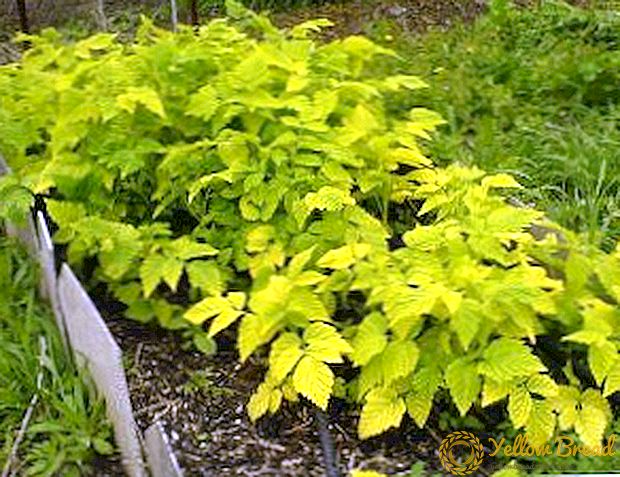 iron. In case of shortage, the leaves begin to change their color unevenly to bright yellow. Berries dry. You can help by introducing into the soil chelates of iron, ferrous sulfates, ferrous sulfate. The same signs can be observed with an excess of iron;
iron. In case of shortage, the leaves begin to change their color unevenly to bright yellow. Berries dry. You can help by introducing into the soil chelates of iron, ferrous sulfates, ferrous sulfate. The same signs can be observed with an excess of iron;- potassium. With its lack of a reddish-brown burn appears on the edge of the leaves.The leaves become bluish, curly appears. Berries, without ripening, dry up. To prevent this, you need to add 70 grams of potassium per 1 square meter when planting. m and during the season - another 12 g. But if there is a lot of potassium - the leaves become lighter, fall off;
- nitrogen. Leaves falling for no apparent reason are fixed, young shoots grow weakly, fruiting stops, leaves become light in color. With these signs, the blackberry is treated with a potassium-sodium-nitrogen complex (with a predominance of nitrogen). When there is excess nitrogen, the blackberry bush shows weak growth, brownish spots appear on the leaves at the edges, leaves curl and fall, and winter resistance decreases;
- boron. When it is scarce, the leaves become smaller, partially discolored, twisted and fall off (by the middle of the season, the tips of the shoots can be completely bare, the apical bud can die), the plant does not bloom well, and the berries do not mature. During the flowering period, you must make boric acid (up to 2 g per 1 sq. M.). Excess boron is manifested in burns of leaves (along the edges), their twisting;
- calcium. In the case of calcium deficiency, the apical bud dries out, new shoots turn yellow (last year green), the growth of roots slows down. The introduction of superphosphate and organic matter into the soil helps;
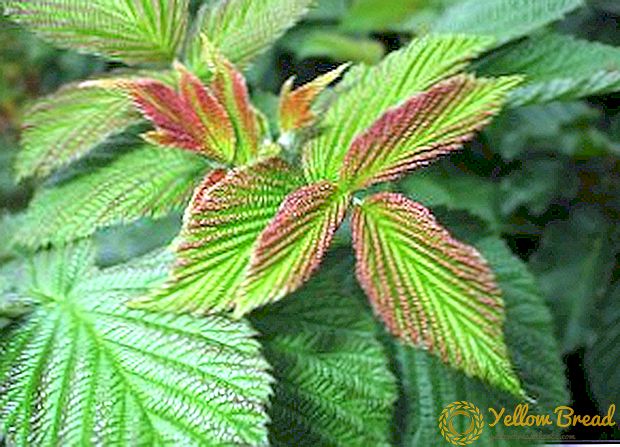 magnesium.Signal of shortage - the leaves become red, by the middle of the season they fall, fruit branches slow down in growth. To prevent it - enrich the soil with dolomite flour, magnesium sulfate (up to 60 g per 1 sq. M.), Ash. Excess magnesium causes leaves to darken, shrink and die off (especially in heat).
magnesium.Signal of shortage - the leaves become red, by the middle of the season they fall, fruit branches slow down in growth. To prevent it - enrich the soil with dolomite flour, magnesium sulfate (up to 60 g per 1 sq. M.), Ash. Excess magnesium causes leaves to darken, shrink and die off (especially in heat).- manganese. Its disadvantage gives young leaves a patterned yellow-green pattern, the leaves begin to fall off. The average dose of manganese is 3-5 g per 1 sq. Km. m;
- copper. The lack of copper is manifested in the white tips of the leaves, which then wither and dry, the development of the shoots slows down, the buds die, and the frost resistance decreases. Copper is better to make in the composition of complex fertilizers with trace elements;
- zinc. Its shortage will be reported by yellowing tops, small, narrow and asymmetrical leaves (with a bronze tint), the berries do not ripen. Excess zinc leads to yellowing and subsidence of young leaves. Old veins redden and blacken, apical buds fall.
The best way out for a gardener when planting is to carefully add organic matter, alternate with years of complete fertilizer, in the spring use a nitrogen-phosphorus-potassium complex with the addition of boron, manganese, etc.
Bacterial diseases, measures to combat them
Blackberry sensitivity to bacterial diseases is increased. Blackberry bacterial disease causes root damage - this is root cancer (Agrobacterium tumefaciens). Pathogens penetrate the plant through natural holes and the smallest damage.
Crayfish
 When the disease is caused by bacterial root cancer, neoplasms appear at the roots of the plant (at the base of the shoots) from 0.5 mm to 5 cm in diameter. The neoplasms have a bumpy, initially green, later dark brown or black surface, a light core and a solid texture. The disease affects the plant negatively:
When the disease is caused by bacterial root cancer, neoplasms appear at the roots of the plant (at the base of the shoots) from 0.5 mm to 5 cm in diameter. The neoplasms have a bumpy, initially green, later dark brown or black surface, a light core and a solid texture. The disease affects the plant negatively:
- development of shoots is inhibited;
- the size of the plant is reduced, the leaves turn yellow, and the berries are dry and small;
- yield decreases;
- drought and frost resistance decreases.
Cancer treatment is impossible. Agrobacterium radiobacter based preparations (Galltrol or Nogall) can inhibit the development of the disease.
Remedies include:
- when transplanting, digging, fertilizing, make sure that the blackberry root system does not suffer from garden tools;
- do not grow a bush in one place for more than 7 years;
- do not get herbicides on the blackberry - places of burns can become pathogenic foci;
- return to the old sites no less than 4 years later;
- at the end of the season, cut off the damaged and seed-bearing stems, burn them (do not leave hemp!);
- spray blackberry Bordeaux liquid, "Abiga-Peak", "Oxyhom."
Viral diseases: signs and treatment
Viruses cause the most dangerous diseases for the blackberry garden - scientists have not yet developed the means for effective treatment. The main preventive methods are the use of healthy seedlings, the destruction of wild blackberry plants within a radius of 20 m from the garden; compliance with agrotechnical norms.
Curly
 Curly - a disease infrequent, but serious. Sick more often 2-year-old plants. The main signs of curliness:
Curly - a disease infrequent, but serious. Sick more often 2-year-old plants. The main signs of curliness:
- lag in growth;
- saturated green coloring of leaves, their hardness and wrinkling;
- the edges of the leaves are bent to the bottom, by the end of the season - necrosis of the veins;
- flowers are deformed and not pollinated.
Mosaic
Affected blackberry leaves have chaotic yellowish spots. Gradually, they become convex, the sheet plates are deformed. The disease is transmitted through pests (aphids, cicadas) or through planting material. Mosaic disease is terrible in that the frost resistance of the shrub is reduced, the diseased plant will not survive the winter. In addition, the mosaic inhibits the development of the plant, thinning the vines, reduces the yield.
Means to combat mosaic does not exist. Prevention is used primarily:
- planting healthy seedlings;
- sanitary cleaning of the site, the destruction of diseased plants and pests.
Yellow mesh

The main distributors of the virus are aphids. Symptoms of the disease coincide with the symptoms of reticular chlorosis:
- yellowing of leaves in the form of individual spots (streaks are highlighted in green);
- increased chlorosis;
- stop the growth of shoots.
Blackberry fungal diseases, how to deal with them
Blackberry fungal disease is one of the most common problems of blackberry growers (80% of all diseases). It is caused by fungi that penetrate through the stomata, damage (wounds and scratches) of roots, shoots, stems. Disease is transmitted through the garden tool, wind, rain.
Anthracnose
The fracture in our latitudes appears at the beginning of the season. It is called spores of the fungus Gloeosporium venetum Speg (excess moisture is especially favorable for the development of the disease - rainy summer, excessive watering). The most affected by the disease:
- leaves - gray spots grow and deepen along the main veins, a purple border appears (3 mm);
- berries - ulcers of gray color, deformed form, dry and fall green;
- shoots (less often) - purple spots on root shoots, drying of fruit twigs.
 Blackberry anthracnose is incurable - it is necessary to burn a diseased plant with roots. In the next few years, only vegetables are planted in this place.
Blackberry anthracnose is incurable - it is necessary to burn a diseased plant with roots. In the next few years, only vegetables are planted in this place.In early spring, complex fertilizers are applied to the soil, sanitary cleaning is carried out. If suspicious symptoms are noticed, it is necessary to carry out a triple treatment with fungicides (before flowering, when the shoots reach 30-35 cm and at the end of the season) - 5% copper (or iron) vitriol, Fundazole, Bardo Blue, etc.
White spot (septoriosis)
Blackberry septoriosis is a frequent disease (especially in rainy summer). The causative agent - fungal spores of Septori Rubi West. The disease is fixed at the beginning of the season. First of all, 2-year shoots are affected, later - one-year shoots. Among the signs are:
- round pale brown spots with a thin rim;
- dark brown or black fungal points - pycnidia;
- after the merging of the spots, the affected area of the leaf is destroyed, mucus appears, the berries rot.
Purple Spot (Didimella)
 The purple blotch of leaves on the blackberry affects primarily young buds, offspring and petioles (the leaves are least affected). The causative agent of the disease is the fungal spores of Didymella applanata Sacc. The disease progresses particularly with increased moisture and thickened plantings. The signs of the disease include:
The purple blotch of leaves on the blackberry affects primarily young buds, offspring and petioles (the leaves are least affected). The causative agent of the disease is the fungal spores of Didymella applanata Sacc. The disease progresses particularly with increased moisture and thickened plantings. The signs of the disease include:
- drying of young buds and stems;
- necrotic dark spots on the leaves, foliage;
- purple spots on the stem (initially in the lower and upper parts);
- poor flowering and lack of ovaries.
Preventive actions:
- following the rules of agricultural engineering;
- the fight against thickening and maintaining cleanliness;
- spring processing area.
Gray Rot (Botrytis)
The disease is caused by the spores of the fungus Botyrtis cinerea Pers. The first signs of the disease appear already during flowering. Gray rot can strike all above-ground parts of blackberry, but the berries most often suffer - they lose their aroma, taste, and are covered with gray fluffy bloom. When humidity increases, blackberry berries rot, and at low mummification.
 With the defeat of the shoots - they are also covered with a gray bloom. When the temperature drops on the affected shoots, black bumps (sclerotia) are formed; in winter, sick shoots die, sclerotia fall into the ground and can stay there for several years, representing a danger not only for blackberries, but also raspberries, currants, strawberries.
With the defeat of the shoots - they are also covered with a gray bloom. When the temperature drops on the affected shoots, black bumps (sclerotia) are formed; in winter, sick shoots die, sclerotia fall into the ground and can stay there for several years, representing a danger not only for blackberries, but also raspberries, currants, strawberries.
To combat the disease most often used fungicides with iprodinone (Rovral Aquaflo) mixed with Captan. After 2 consecutive applications, it is necessary to alternate with other fungicides, for example, based on fenhexamide (Teldor preparation), combined fungicides (containing pyraclostrobin and boscalid).
Rust
The causative agent of fungal disease is Phragmidium Link. The name of the disease received from the fungal spores of orange, yellow color, which are covered with spots of the plant. The disease occurs from early summer to late autumn:
- the beginning of summer - small orange dots appear on the leaves and stems - spermogony and the formation of spermacies begins. Later, convex point pads (etzii) appear. Disputes from aetias with wind and water infect healthy leaves;
- The middle of the summer is the most harmful stage: rust appears on the lower leaves as brown pads (urediniopustul), in which several generations of spores are produced. These spores re-infect the plant;
- end of summer - autumn: black pads are formed on the leaves - teliopustula with spores ready for wintering on the fallen leaves.
 The mycelium is very resistant to cold weather, and with fallen leaves it winters well.
The mycelium is very resistant to cold weather, and with fallen leaves it winters well.Fighting rust includes cleaning fallen leaves, timely watering, routine inspection with the removal of suspicious or weak branches, mulching with humus with antifungal microorganisms. Gardeners are advised to spray blackberries with garlic extract at the first sign of a rust infection.
Phyllosticosis
Infection occurs by spores through the soil, wind or water. The disease begins to manifest itself as spots. The spots differ depending on the causative agent of the disease:
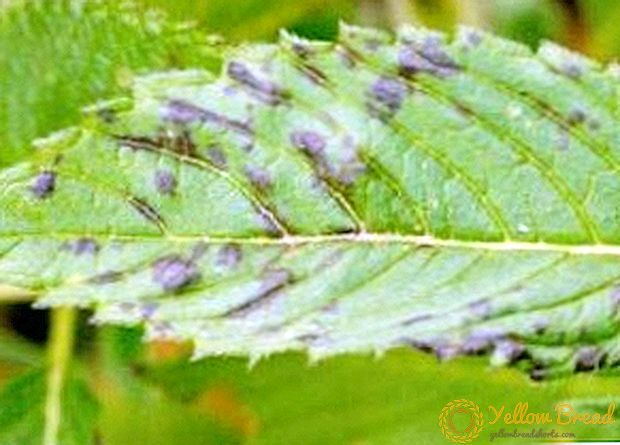 its large size, irregular shape, dark brown color with yellowish fragments and rim shows that the disease is caused by fungal spores of Phyllosticta fuscozanata Thum;
its large size, irregular shape, dark brown color with yellowish fragments and rim shows that the disease is caused by fungal spores of Phyllosticta fuscozanata Thum;- small white spots - Phyllosticta ruborum Sacc fungus.
The lesions are covered with black dots - these are pycnidia with spores. The leaves fall, reduced blackberry productivity, its endurance.
Gardeners are advised to spray the diseased blackberry bush with a mixture of laundry soap (300 g) and copper sulfate (30 g) for 10 liters of soft water. Preventive measures - cleaning of fallen leaves.

 iron. In case of shortage, the leaves begin to change their color unevenly to bright yellow. Berries dry. You can help by introducing into the soil chelates of iron, ferrous sulfates, ferrous sulfate. The same signs can be observed with an excess of iron;
iron. In case of shortage, the leaves begin to change their color unevenly to bright yellow. Berries dry. You can help by introducing into the soil chelates of iron, ferrous sulfates, ferrous sulfate. The same signs can be observed with an excess of iron; magnesium.Signal of shortage - the leaves become red, by the middle of the season they fall, fruit branches slow down in growth. To prevent it - enrich the soil with dolomite flour, magnesium sulfate (up to 60 g per 1 sq. M.), Ash. Excess magnesium causes leaves to darken, shrink and die off (especially in heat).
magnesium.Signal of shortage - the leaves become red, by the middle of the season they fall, fruit branches slow down in growth. To prevent it - enrich the soil with dolomite flour, magnesium sulfate (up to 60 g per 1 sq. M.), Ash. Excess magnesium causes leaves to darken, shrink and die off (especially in heat). its large size, irregular shape, dark brown color with yellowish fragments and rim shows that the disease is caused by fungal spores of Phyllosticta fuscozanata Thum;
its large size, irregular shape, dark brown color with yellowish fragments and rim shows that the disease is caused by fungal spores of Phyllosticta fuscozanata Thum;